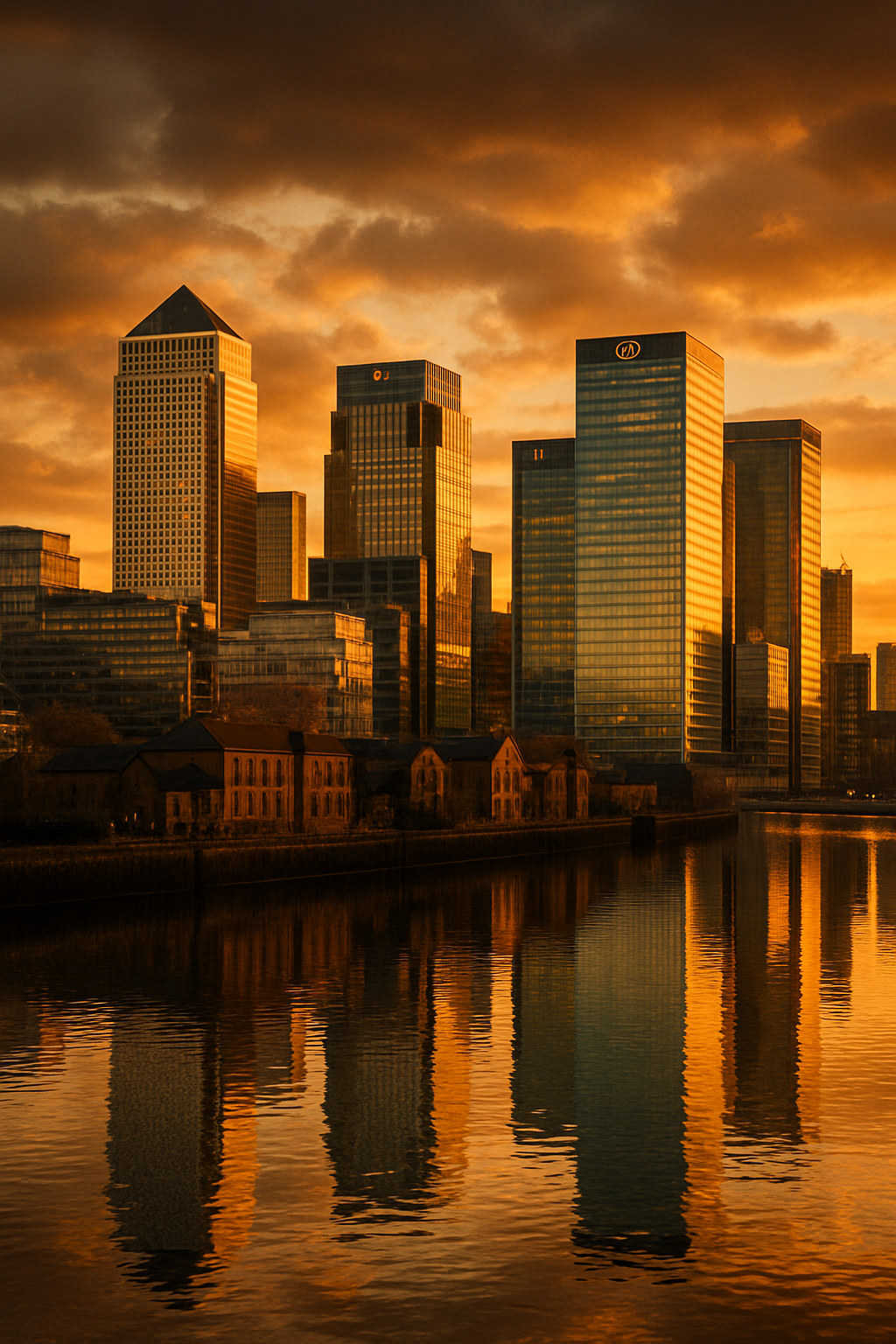1930s – The Naming of Canary Wharf
In the early 20th century, South Quay was just another cog in London’s vast machine of maritime trade. Tucked away in the Docklands, it was a busy but unremarkable patch of riverfront—where cargo ships nudged into place, and men worked long hours hauling goods from every corner of the world. It was all function, little fanfare.
Among the crates offloaded there, bananas were becoming a regular feature. Once an exotic delicacy, by the 1930s they were slipping into everyday British life. And much of that fruit came from a very specific source: the Canary Islands, a volcanic archipelago off the northwest coast of Africa. British ships had been stopping there for decades, taking on not just fruit, but fuel, fresh water, and other supplies before crossing the Atlantic or returning home.
The bananas arrived packed in straw, the fruit still green to survive the journey. As they ripened in the warehouses of South Quay, they gave the air a distinctive scent—sweet, heady, and unmistakable. It mingled with the brine of the Thames, filling the docks with a strangely tropical edge.
1937: A Name That Travelled Across the Sea
In 1937, South Quay was officially renamed Canary Wharf. On paper, it was a simple rebrand. But the choice was deliberate.
The Canary Islands weren’t just the source of bananas—they were a symbol of Britain’s wider web of trade, a waypoint on routes stretching from Africa to the Americas. Naming a part of London’s docks after them was a quiet declaration: this place matters. It’s not just a warehouse district—it’s a global gateway.
And for those working there, the name probably felt apt. The fruit trade had become central to daily life in the area. The ships, the crates, the scent—it all spoke of the connection between this East London quay and the distant volcanic islands that gave it its new name.
Post-1937: Shifting Tides
Over the following decades, the world of shipping began to change. The rise of containerisation meant fewer small ports, fewer dockworkers, and a centralisation of trade. Slowly, the rhythm of South Quay began to fade. Warehouses emptied. Cranes stood still. The sweet tang of ripening fruit gave way to rust and silence.
Yet the name Canary Wharf endured. Even as the area fell into disrepair, it held onto its identity—an echo of its maritime past.
Today: The Layers Beneath the Skyline
By the late 20th century, Canary Wharf was reborn. A massive regeneration project transformed the area into a new kind of hub—not for ships, but for finance. Glass towers rose where warehouses once stood. The cargo now is data, investment, and influence.
To most people today, "Canary Wharf" conjures images of bankers and business meetings. But the name itself still points to something older—something saltier, sweeter, and far more tangible. It’s a quiet reminder that this part of London was once a working dock, tied to distant shores not through capital flows, but through crates of bananas and the hands that moved them.
In a way, that legacy still lingers—just beneath the surface, carried in a name that travelled a long way to get here.
Today, Canary Wharf is synonymous with finance, industry, and power. Yet beneath the glass façades of the towering buildings, the name still holds echoes of a time when the docks were alive with the sounds of merchants, sailors, and traders. From bananas to banking, the name Canary Wharf endures as a tribute to London’s enduring legacy of trade and its place in the world’s economy.


